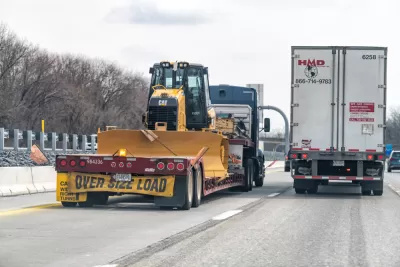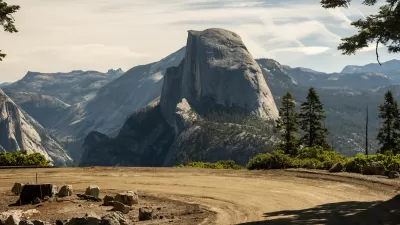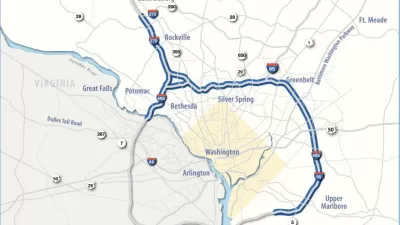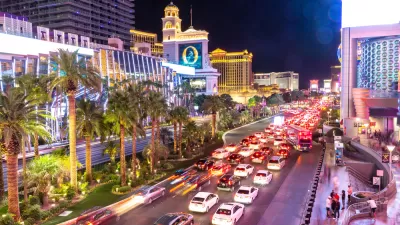Despite the narrative about infrastructure spending priorities shifting toward emissions-reducing investments in the American Jobs Plan, the car-centric status quo expects more of the same.

If you've been reading the news and commentary about the American Jobs Plan proposed by the Biden administration at the end of March, you wouldn't be wrong to expect big benefits for renewable energy, public transit, and other, investments that reflect a more expansive concept of infrastructure.
According to an article by Michael Gorsegner, reporting for CBS 21 in Pennsylvania, representatives for the Pennsylvania Department of Transportation see the American Jobs Plan as good news for the state's roads.
"Pennsylvania may see an influx of cash to fix its crumbling road network," writes Gorsegner. That assessment is echoed by the comments of Chris Drda, acting District 8 executive for PennDOT, who is quoted in the article saying that the jobs plan is great news for the transportation industry in Pennsylvania. One project mentioned in the article as a potential recipient of American Jobs Plan funding is a proposal to widen a 100-mile stretch of Interstate 81 from the Maryland state line to Interstate 78 at cost of $3 billion.
The article also mentioned a plan to add an interchange to Interstate 83 in York County as a potential recipient of funding. That plan is moving forward, according to Gorsegner, with or without new funding from the Biden jobs plan.
FULL STORY: Transportation experts eye cash influx with Presidential plan

Manufactured Crisis: Losing the Nation’s Largest Source of Unsubsidized Affordable Housing
Manufactured housing communities have long been an affordable housing option for millions of people living in the U.S., but that affordability is disappearing rapidly. How did we get here?

Americans May Be Stuck — But Why?
Americans are moving a lot less than they once did, and that is a problem. While Yoni Applebaum, in his highly-publicized article Stuck, gets the reasons badly wrong, it's still important to ask: why are we moving so much less than before?

Using Old Oil and Gas Wells for Green Energy Storage
Penn State researchers have found that repurposing abandoned oil and gas wells for geothermal-assisted compressed-air energy storage can boost efficiency, reduce environmental risks, and support clean energy and job transitions.

Updating LA’s Tree Rules Could Bring More Shade to Underserved Neighborhoods
A new USC study finds that relaxing Los Angeles’ outdated tree planting guidelines could significantly expand urban tree canopy and reduce shade disparities in lower-income neighborhoods, though infrastructure investments are also needed.

California's Canal Solar Projects Aim to Conserve Resources and Expand Clean Energy
California’s Project Nexus has begun generating electricity from solar panels installed over irrigation canals, with researchers and state agencies exploring statewide expansion to conserve water and boost clean energy production.

HHS Staff Cuts Gut Energy Assistance Program
The full staff of a federal program that distributes heating and cooling assistance for low-income families was laid off, jeopardizing the program’s operations.
Urban Design for Planners 1: Software Tools
This six-course series explores essential urban design concepts using open source software and equips planners with the tools they need to participate fully in the urban design process.
Planning for Universal Design
Learn the tools for implementing Universal Design in planning regulations.
Heyer Gruel & Associates PA
City of Moreno Valley
Institute for Housing and Urban Development Studies (IHS)
City of Grandview
Harvard GSD Executive Education
Salt Lake City
NYU Wagner Graduate School of Public Service
City of Cambridge, Maryland





























